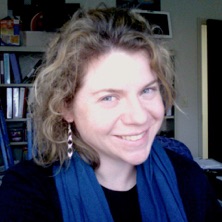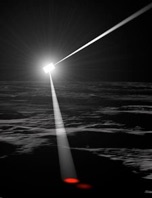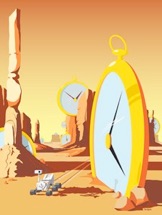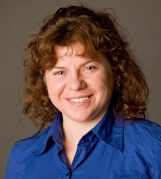Barbara Cohen, PhD
Contact:
ZP13 / NSSTC 2066
320 Sparkman Dr.
Huntsville AL 35805
Phone: (256) 961-7566
Fax: (256) 961-7215
Barbara.A.Cohen at nasa dot gov
Education:
PhD, Planetary Sciences, University of Arizona, 2000
BS, Geology, State University of New York at Stony Brook, 1993
Publications:
Click here for Google Scholar profile
Research Interests:
-
•Impact history of the inner solar system
-
•40Ar-39Ar geochronology of returned lunar rocks, meteorites, and terrestrial craters
-
•Geochemistry and mineralogy of Martian rocks using the Mars Exploration Rovers
-
•Thermal and aqueous evolution of meteorite parent bodies
-
•Mission operations for robotic and human missions
-
•Informal science education via public talks, science museums, teacher training, and web-based activities
Dr. Barbara Cohen is a member of the planetary science group at the Marshall Space Flight Center. Originally from upstate New York, Dr. Cohen earned her BS in Geology from the State University of New York at Stony Brook and her PhD in Planetary Science from the University of Arizona with Dr. Tim Swindle. For her PhD research, she used microbeam analyses and 40Ar-39Ar radiometric dating of lunar impact melt clasts from lunar meteorites to add to our understanding of impact rates and timing on the Moon. She showed that impact melt clasts in lunar meteorites are distinct from Apollo samples and have relative young ages, consistent with a lunar cataclysm hypothesis. Subsequently, she worked as a postdoctoral researcher with Dr. Larry Taylor at the University of Tennessee and Dr. Klaus Keil at the university of Hawaii, conducting original research on the petrology, composition, and geochronology of new lunar meteorites, Luna 20 samples, and ureilites, unique differentiated meteorites.
In 2003, Dr. Cohen joined the research staff at the Institute of Meteoritics (IOM), University of New Mexico. There, she continued to expand her analytical work on lunar meteorites and howardites, as well as helping oversee the IOM meteorite collection. In 2005, she became a member of the Science Team for the Mars Exploration Rovers Spirit and Opportunity, examining the geochemical properties of impact products on the Martian surface and contributing to science team plans for the rovers’ investigations. Dr. Cohen continued on to fill multiple operational roles, in which she continues to work, including Science Operations Working Group Documentarian, Keeper of the Plan, APXS and Mossbauer uplink/downlink lead, and Mineralogy and Geochemistry Theme Group lead.
Dr. Cohen came to NASA MSFC in 2007 specifically to continue to build bridges between science and engineering, using her scientific knowledge and MER experience to support human exploration planning for the Moon for the Constellation program, including the Lunar Precursor Robotics Program (LPRP) managed at MSFC. During this time, Dr. Cohen worked to bring Constellation engineers what they needed from the Lunar Reconnaissance Orbiter (LRO) and its companion, LCROSS, helped initiate the Lunar Mapping and Modeling Project, and helped write the engineering design specification documents describing the lunar environment. She served as the project scientist for the US nodes of the International Lunar Network, a science mission to provide geophysical information about the Moon’s interior structure and composition. Dr. Cohen helped craft the National Research Council report, “The Scientific Context for Exploration of the Moon,” which set science priorities within lunar exploration plans., and served on the 2013 Planetary Science Decadal Survey, which provides a roadmap for NASA Planetary Science missions, research, and technology priorities in this decade.
Dr. Cohen continues to represent science within human spaceflight planning. She is involved with the science backroom operations at the Desert RATS (D-RATS) field test activity, drawing on parallels to Apollo protocols, MER mission operations, and Antarctic fieldwork. She recently completed two seasons under the Moon-Mars Analog Mission Activities program, testing Mars-inspired operational strategies for semi-autonomous rovers on the Moon. Dr. Cohen serves as needed on Agency-supporting activities informing future human exploration planning at destinations such as Lagrange points, near-earth asteroids, and the Martian moons Phobos and Deimos.
Currently, Dr. Cohen is a Principal Investigator on multiple NASA SMD projects and is a Co-Investigator on several spacecraft and instrument proposal teams, including the Mars Exploration Rovers (Opportunity) and Mars Science Laboratory (Curiosity). She is the Principal Investigator for the Lunar Flashlight mission, which will send a cubesat to the Moon in 2018 to search for water ice frost. Her current science interests concentrate on understanding the importance of impact craters in the solar system. She has participated in the Antarctic Search for Meteorites (ANSMET) in three seasons, where helping recovered more than a thousand pristine samples for the US collection. She has served on NASA’s advisory committees for curating and allocating planetary samples (CAPTEM) and the Meteorite Working Group, allocating Antarctic meteorite samples to researchers all over the world. She is the PI for the MSFC Noble Gas Research Laboratory (MNGRL), which provides age dates on impact materials from the Moon, asteroids, and Mars. She is developing a flight version of her noble-gas geochronology technique, the Potassium-Argon Laser Experiment (KArLE), for use on future planetary landers and rovers.



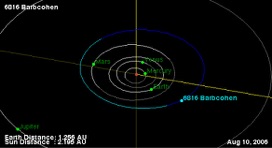
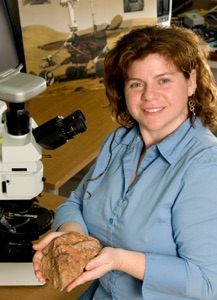

Last Modified: March 8, 2016
Web Services provided by Bob Dean (MITS)
NASA Official: Barbara Cohen
